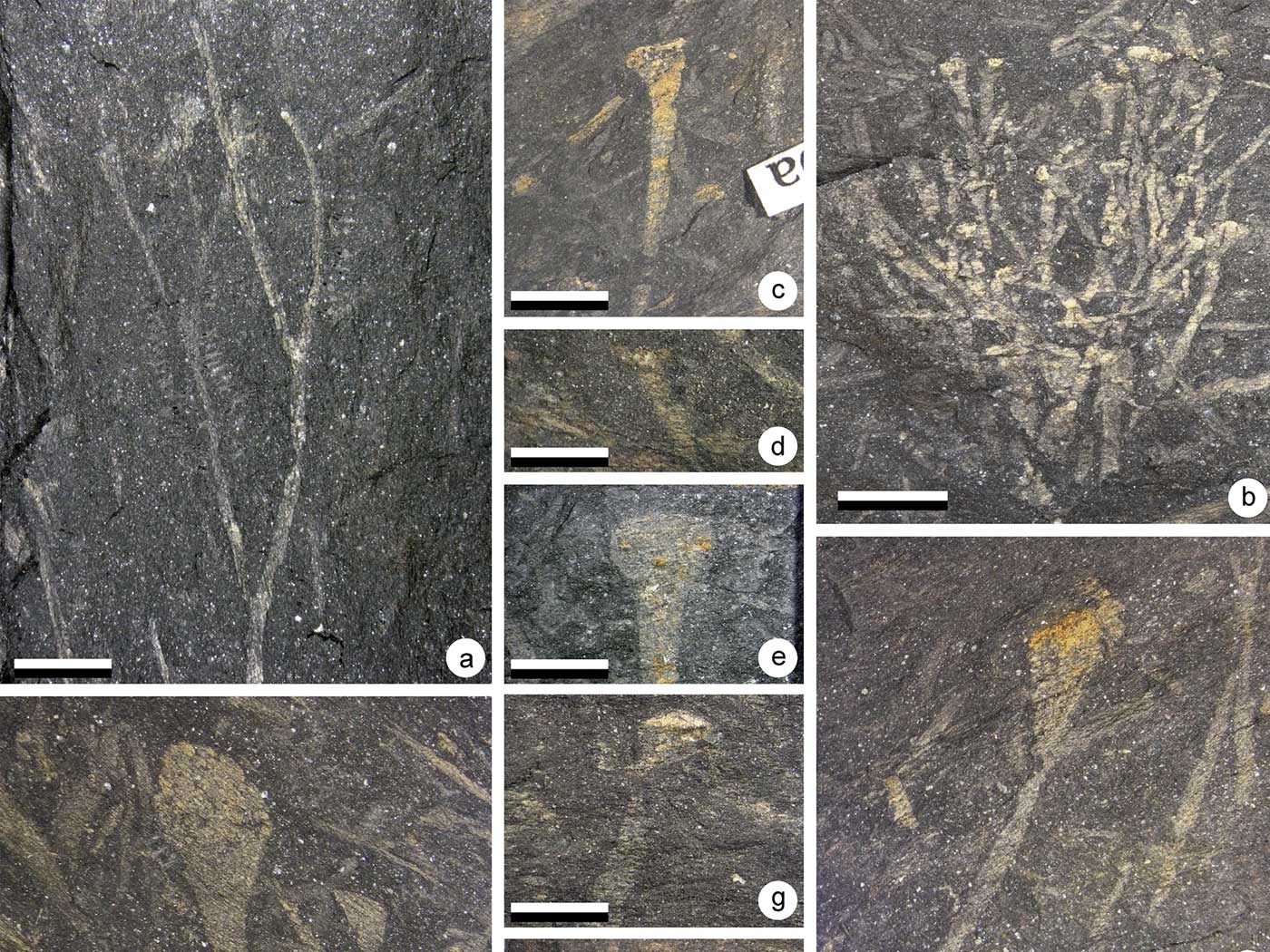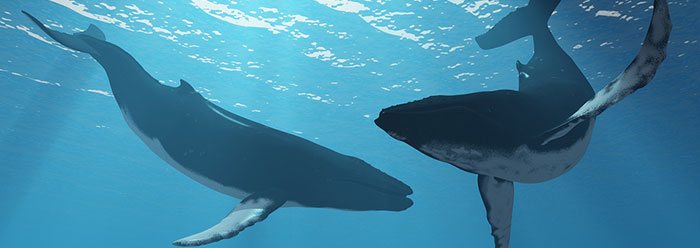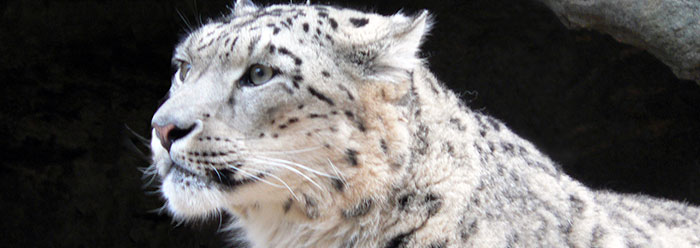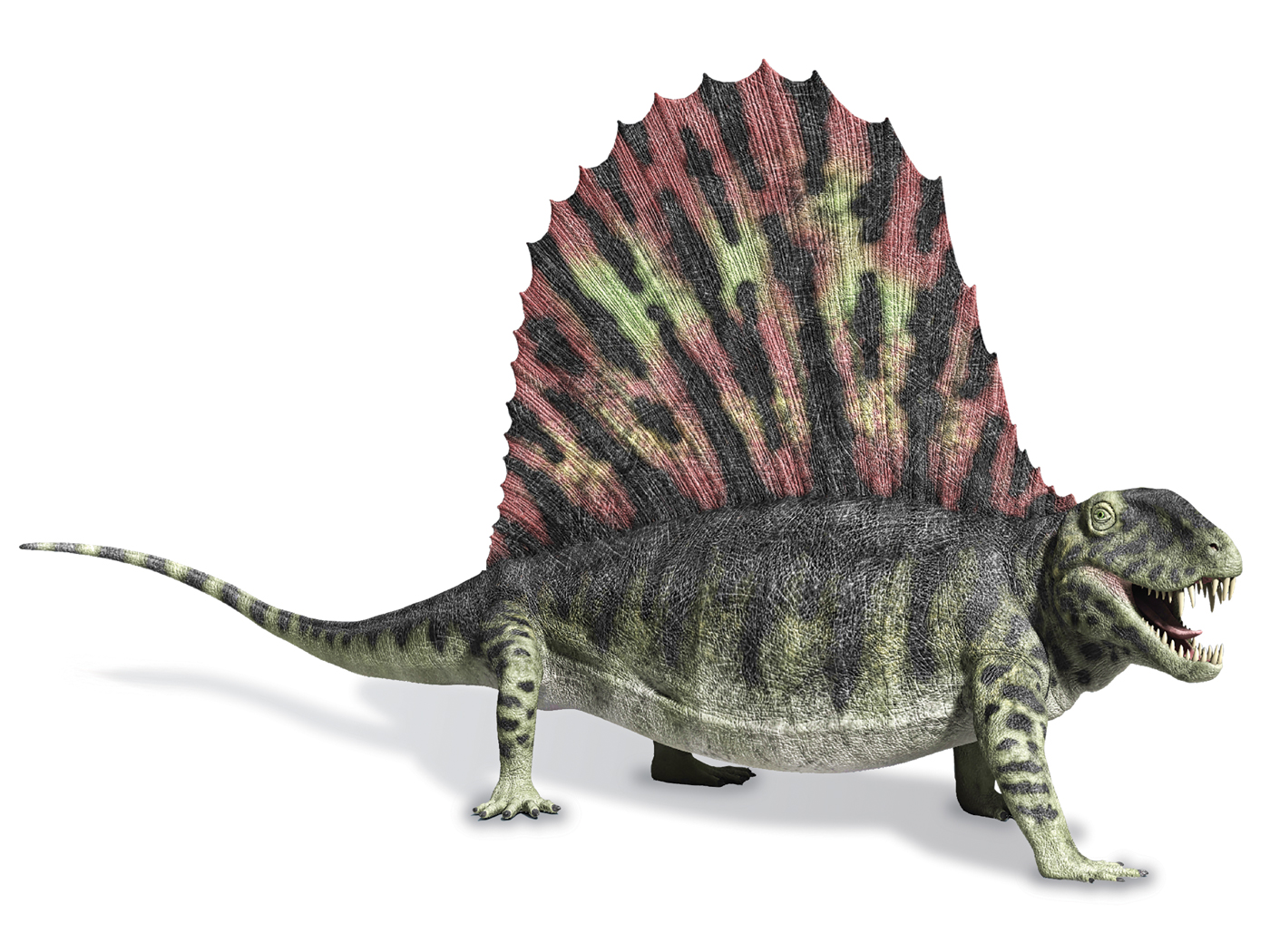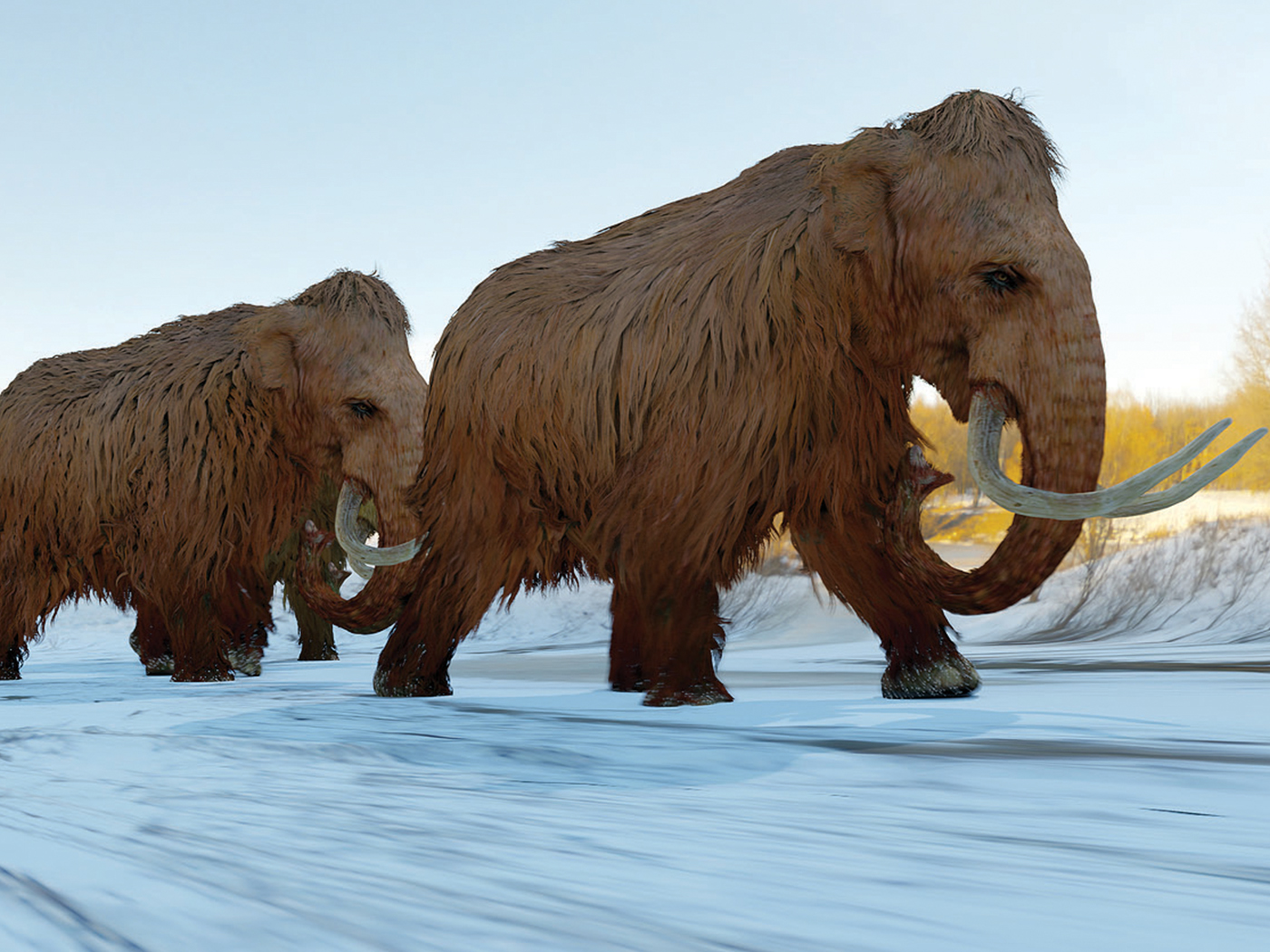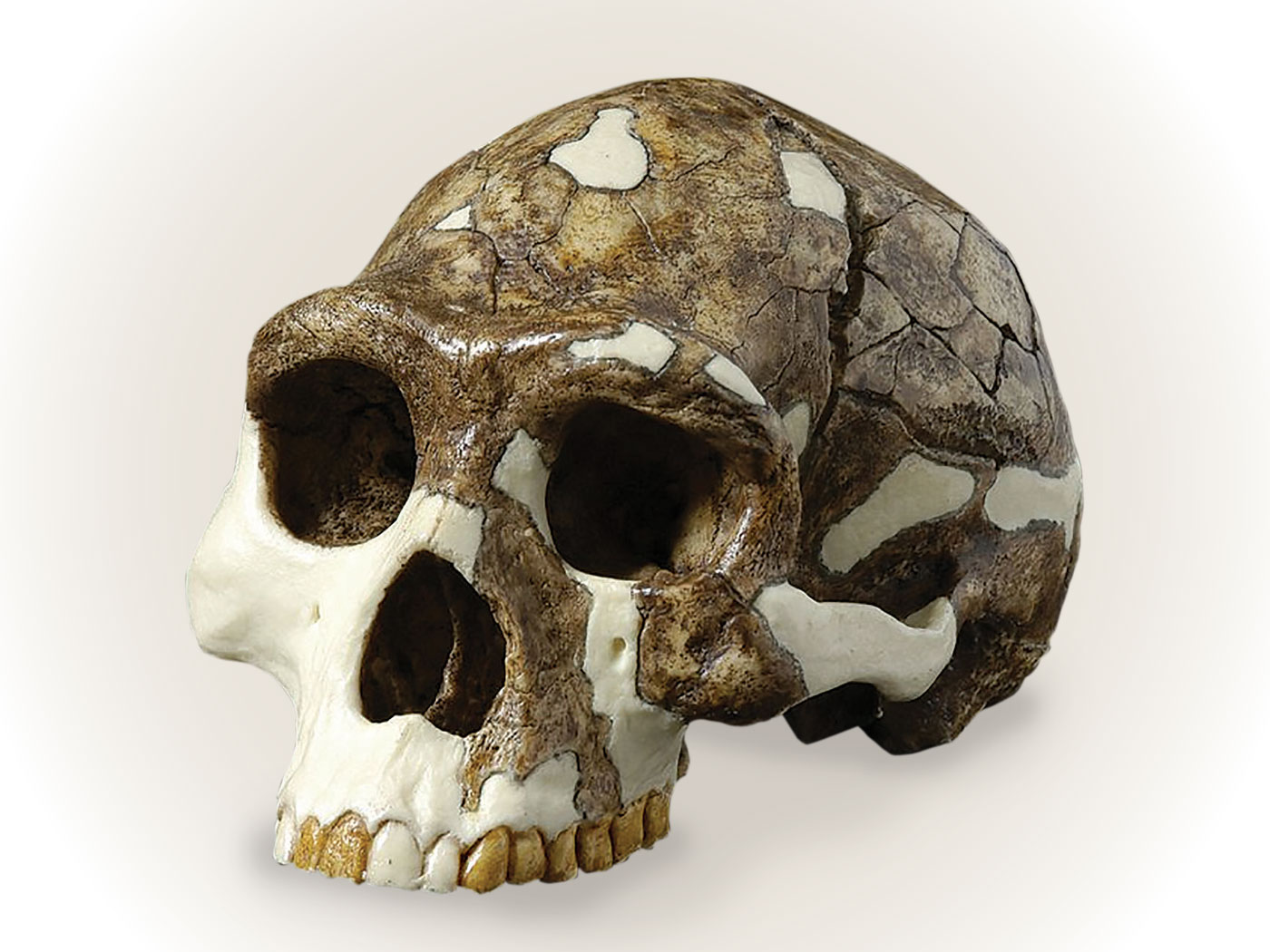There is a growing consensus that Archaeopteryx, a bird whose fossils have been found in the Solnhofen Plattenkalk of Franconia (West Germany), was indeed capable of flight. The claim, however, that Archaeopteryx was a transitional form between reptiles and birds simply won't fly.
Recent fossil discoveries and recent research on Archaeopteryx argue strongly against the suggestion that it is transitional between reptiles and birds. The rocks in which fossils of Archaeopteryx have been found are designated Upper Jurassic, and thus are dated at about 150 million years on the standard evolutionary geological time scale. Ninety years ago, with reference to Archaeopteryx and to two other ancient birds, Ichthyornis and Hesperornis, Beddard declared, "So emphatically were all these creatures birds that the actual origin of Aves is barely hinted at in the structure of these remarkable remains."1 During the years since publication of Beddard's book, no better candidate as an intermediate between reptiles and birds has appeared, and so, in the eyes of its beholders, Archaeopteryx has become more and more reptile-like until it is now fashionable to declare that Archaeopteryx was hardly more than a feathered reptile. In 90 years, Archaeopteryx has thus evolved from a creature so emphatically bird-like its reptilian ancestry was barely hinted at into a creature some evolutionists declare to be nothing more than a reptile with feathers!
What is the true status of Archaeopteryx? Was it a transitional form between reptiles and birds? First, the general nature of the evidence: The sudden appearance, fully formed, of all the complex invertebrates (snails, clams, jellyfish, sponges, worms, sea urchins, brachiopods, trilobites, etc.) without a trace of ancestors, and the sudden appearance, fully formed, of every major kind of fish (supposedly the first vertebrates) without a trace of ancestors, proves beyond reasonable doubt that evolution has not occurred. Quarrels about disputable cases such as Archaeopteryx are really pointless. Furthermore, there are three other basically different types of flying creatures…flying insects, flying reptiles (now extinct), and flying mammals (bats). It would be strange, indeed, even incomprehensible, that millions of years of evolution of these three basically different types of flying creatures, each involving the remarkable transition of a land animal into a flying animal, would have failed to produce large numbers of transitional forms. If all of that evolution has occurred, our museums should contain scores, if not hundreds or thousands, of fossils of intermediate forms in each case. However, not a trace of an ancestor or transitional form has ever been found for any of these creatures!
Archaeopteryx had an impressive array of features that immediately identify it as a bird, whatever else may be said about it. It had perching feet. Several of its fossils bear the impression of feathers. These feathers were identical to those of modern birds in every respect. The primary feathers of non-flying birds are distinctly different from those of flying birds. Archaeopteryx had the feathers of flying birds,2 had the basic pattern and proportions of the avian wing, and an especially robust furcula (wishbone). Furthermore, there was nothing in the anatomy of Archaeopteryx that would have prevented it being a powered flyer.3 No doubt Archaeopteryx was a feathered creature that flew. It was a bird!
It has been asserted that Archaeopteryx shares 21 specialized characters with coelurosaurian dinosaurs.4 Research on various anatomical features of Archaeopteryx in the last ten years or so, however, has shown, in every case, that the characteristic in question is bird-like, not reptile-like. When the cranium of the London specimen was removed from the limestone and studied, it was shown to be bird-like, not reptile-like.5 Benton has stated that "details of the brain case and associated bones at the back of the skull seem to suggest that Archaeopteryx is not the ancestral bird, but an offshoot from the early avian stem."6 In this same paper, Benton states that the quadrate (the bone in the jaw that articulates with the squamosal of the skull) in Archaeopteryx was singleheaded as in reptiles. Using a newly devised technique, computed tomography, Haubitz, et al, established that the quadrate of the Eichstatt specimen of Archaepoteryx was double-headed and thus similar to the condition of modern birds,7 rather than single-headed, as stated by Benton.
L.D. Martin and co-workers have established that neither the teeth nor the ankle of Archaeopteryx could have been derived from theropod dinosaurs…the teeth being those typical of other (presumably later) toothed birds, and the ankle bones showing no homology with those of dinosaurs.8 John Ostrom, a strong advocate of a dinosaurian ancestry for birds, had claimed that the pubis of Archaeopteryx pointed downward…an intermediate position between that of coelurosaurian dinosaurs, which points forward, and that of birds, which points backward. A.D. Walker, in more recent studies, asserts that Ostrom's interpretation is wrong, and that the pubis of Archaeopteryx was oriented in a bird-like position.9 Further, Tarsitano and Hecht criticize various aspects of Ostrom's hypothesis of a dinosaurian origin of birds, arguing that Ostrom had misinterpreted the homologies of the limbs of Archaeopteryx and theropod dinosaurs.10
A.D. Walker has presented an analysis of the ear region of Archaeopteryx that shows, contrary to previous studies, that this region is very similar to the otic region of modern birds.11 J.R. Hinchliffe, utilizing modern isotopic techniques on chick embryos, claims to have established that the "hand" of birds consists of digits II, III and IV, while the digits of the "hand" of theropod dinosaurs consist of digits I, II, and III.
Scales are flat horny plates; feathers are very complex in structure, consisting of a central shaft from which radiate barbs and barbules. Barbules are equipped with tiny hooks which lock onto the barbs and bind the feather surface into a flat, strong, flexible vane. Feathers and scales arise from different layers of the skin. Furthermore, the development of a feather is extremely complex, and fundamentally different from that of a scale. Feathers, as do hairs, but unlike scales, develop from follicles. A hair, however, is a much simpler structure than a feather. The developing feather is protected by a horny sheath, and forms around a bloody, conical, inductive dermal core. Not only is the developing feather sandwiched between the sheath and dermal core, it is complex in structure. Development of the cells that will become the mature feather involves complex processes. Cells migrate and split apart in highly specific patterns to form the complex arrangement of barbs and barbules.12
Philip Regal attempts to imagine how feathers may have developed from scales.13 Regal presents a series of hypothetical events whereby the elongation of body scales on reptiles, as an adaptive response to excessive solar heat, eventually produced feathers. What we are left to believe is that a series of genetic mistakes, or mutations, just happened somehow to result in a sequence of incredible events that not only converted a simple horny plate into the tremendously complex and marvelously engineered structure of a feather, but completely reorganized the simple method of development of a scale into the highly complex process necessary to produce a feather. What an incredible faith in the blind forces of evolution! Regal's paper simply adds another "Just-so" story to evolutionary scenarios, completely devoid of empirical support.
Recent events cast even further doubt on Archaeopteryx as a transitional form. If the claims of Sankar Chatterjee prove to be valid, then certainly Archaeopteryx could not be the ancestral bird, and dinosaurs could not be ancestral to birds. Chatterjee and his co-workers at Texas Tech University claim to have found two crow-sized fossils of a bird near Post, Texas, in rocks supposedly 225 million years old…thus allegedly 75 million years older than Archaeopteryx and as old as the first dinosaurs. Totally contrary to what evolutionists would expect for such a fossil bird, however, Chatterjee claims that his bird is even more bird-like than Archaeopteryx! In contrast to Archaeopteryx, this bird had a keel-like breastbone and hollow bones. In most other respects, it was similar to Archaeopteryx.14 If evolutionary assumptions are correct, this bird should have been much more reptile-like than Archaeopteryx. In fact, he shouldn't even exist!
Another threat to the notion that Archaeopteryx was intermediate between reptiles and birds are the claims of Sir Fred Hoyle, the famous British astronomer, fellow astronomer Chandra Wickramasinghe, and Israeli scientist Lee Spetner, based on detailed photographic evidence, that Archaeopteryx is a fraud.15,16 They maintain that an artificial matrix was placed on a reptilian fossil and that modern feathers were used to impress the matrix, to leave a likeness of fossil feathers. Scientists of the British Museum of Natural History have defended the authenticity of the fossil.17 If the allegations of Hoyle, Wickramasinghe, and Spetner turn out to be correct, it would be a devastating blow to evolutionists. If the fossil is a forgery, however, it would have to be a devilishly clever one, because the forger would not only have to fake the feathers, but also somehow emplace the many bird-like features described in this article.
The conclusion which appears to be most reasonable is that Archaeopteryx was a true bird, remarkably isolated from any alleged reptilian progenitor and other birds. A discussion of other features of Archaeopteryx, such as its teeth and clawed wings, may be found in Evolution: The Challenge of the Fossil Record.18
References
1. F.E. Beddard, The Structure and Classification of Birds, Longmans, Green and Co., London, 1898, p. 160.
2. Alan Feduccia and H.B Tordoff, Science 203:1020(1979).
3. S.L. Olson and Alan Feduccia, Nature 278:247(1979).
4. A.J. Charig, A New Look at Dinosaurs, Heinemann, London, 1979, p. 139.
5. K.N. Whetstone, Journal of Vertebrate Paleontology [2(4):439(1983)].
6. M.J. Benton, Nature 305:99(1983).
7. B. Haubitz, M. Prokop, W. Döhring, J.H. Ostrom, and P. Welinhofer, Paleobiology 14(2):206 (1988).
8. L.D. Martin, J.D. Stewart, and K.N. Whetstone, The Auk 97:86 (1980).
9. A.D. Walker, Geological Magazine 117:595 (1980).
10. S. Tarsitano and M.K. Hecht, Zoological Journal of the Linnaean Society 69:149 (1980).
11. A.D. Walker, as described in Peter Dodson, "International Archaeopteryx Conference," Journal of Vertebrate Paleontology 5(2):177, June 1985.
12. A.M. Lucas and P.R. Slettenhein, Avian Anatomy: Integument. U.S. Government Printing Office, Washington, DC, 1972.
13. P.J. Regal, The Quarterly Review of Biology 50:35 (1975).
14. S. Weisburd, Science News, August 16, 1986, p. 103; Tim Beardsley, Nature 322:677 (1986).
15. Gail Vines, New Scientist, 14 March 1985, p. 3; Ted Nield, New Scientist, 1 August 1985, p. 49.
16. Fred Hoyle and Chandra Wickramasinghe, Archaeopteryx: The Primordial Bird. A Case of Fossil Forgery, Christopher Davies Publishers, Swansea, 1986.
17. A.J. Charig, F. Greenaway, A.C. Milner, C.A. Walker, and P.J. Whybrow, Science 232:622(1986).
18. D.T. Gish, Evolution: The Challenge of the Fossil Record, Creation-Life Publishers, El Cajon, CA, 1985.
* At time of publication, Dr. Gish was Vice-President of the Institute for Creation Research.
Cite this article: Gish, D. 1989. As a Transitional Form Archaeopteryx Won’t Fly. Acts & Facts. 18 (9).




